Toyota Corolla (E120) 2002–2008 Repair Manual / Brake / Brake fluid
Toyota Corolla (E120): Brake fluid
Bleeding
Notice
: wash the brake fluid off immediately if it comes into contact with any painted surface. Hint
: if any work is done on the brake system or if air in the brake lines is suspected, bleed the air from the system.
1. Fill reservoir with brake fluid fluid: sae j1703 or fmvss no. 116 Dot3
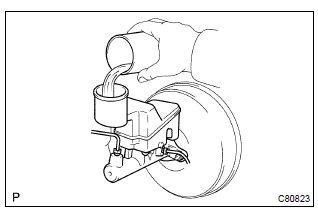
2. Bleed master cylinder
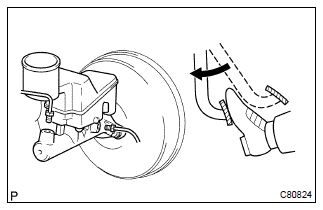
Hint
: if the master cylinder has been disassembled or if the reservoir becomes empty, bleed the air from the master cylinder.
- disconnect the brake lines from the master cylinder.
Sst 09023–00100
- slowly depress the brake pedal and hold it.
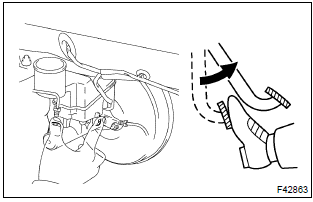
- Block off the outer holes with your fingers, and release the brake pedal.
- repeat (b) and (c) 3 or 4 times.
3. Bleed brake line
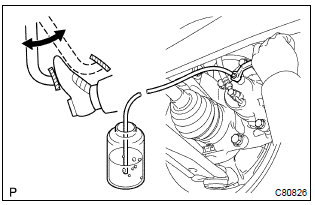
- Connect the vinyl tube to the brake caliper.
- depress the brake pedal several times, then loosen the bleeder plug with the pedal held down.
- at the point when fluid stops coming out, tighten the
bleeder plug, then release the brake pedal.
Torque: 8.3 Nvm (85 Kgf·cm, 74 in.Vlbf)
- repeat (b) and (c) until all the air in the fluid has been bled out.
- Repeat the above procedures to bleed the air out of the brake line for each wheel.
4. Check fluid level in reservoir
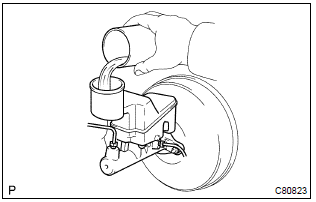
- Check the fluid level and add fluid if necessary.
Fluid: sae j1703 or fmvss no. 116 Dot3
Other materials:
Location of the spare tire, jack and tools
1 Luggage floor cover
2 Wheel nut wrench
3 Jack handle
4 Jack attachment*
5 Jack
6 Spare tire
7 Tool tray
*: The jack attachment is used when raising your vehicle with a floor jack.
CAUTION
■Using the tire jack
Observe the following precautions.
Improper use of the tire jack may c ...
Switching the display
Press to display or hide the album
title.
If there is additional text, is
displayed.
Press and hold to display the remaining
text.
■USB memory functions
●Depending on the USB memory that is connected to the system, the device itself
may not be operable and certain function ...
Bluetooth® device registration status
1 Display the “Bluetooth* Setup” screen.
*: Bluetooth is a registered trademark of Bluetooth SIG, Inc.
2 Select the device.
3 Select “Device Info”.
4 Following screen is displayed:
1 Device Name
2 Change connection method
3 Bluetooth® Address
4 Display your telephone number
The n ...


